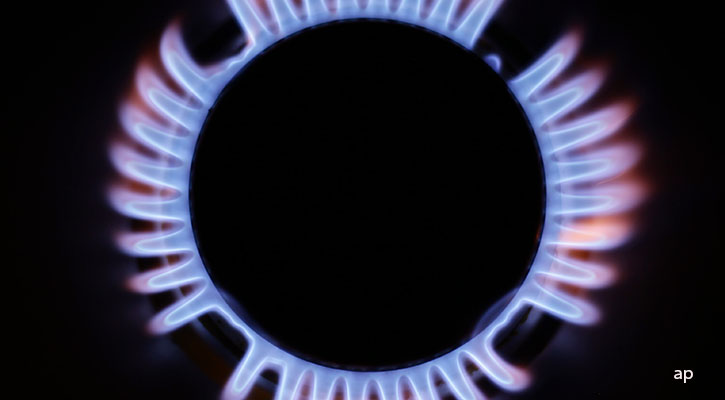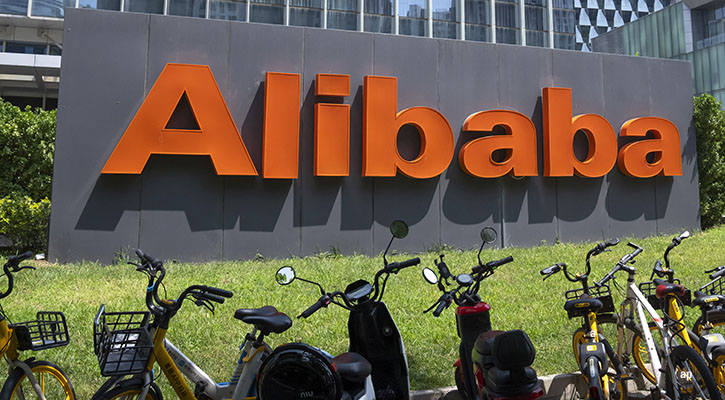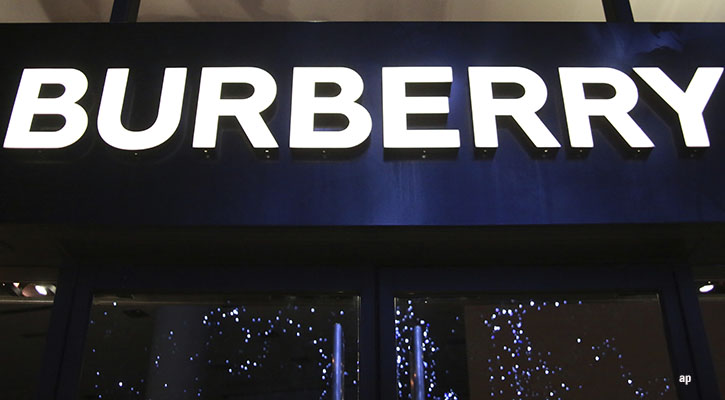We're raising our fair value uncertainty rating for BP to high from medium to reflect greater uncertainty in estimating the potential costs and longer-term liabilities arising from the firm's efforts to stop the Macondo oil spill in the Gulf of Mexico. Uncertainty continues to build over the potential cost and length of time required to stop the oil leaking at the well-site, contain the oil spill in Gulf waters, clean up impacted shorelines, and fill claims of lost revenues to fishing, resorts, and other Gulf Coast businesses. BP's costs to date now total $625 million, which includes $170 million donated to Gulf Coast state governments for block grants (about $100 million) and support for tourism (about $70 million).
Excluding these grants, estimated daily oil containment and clean-up costs could be as high as $15 million per day. This would bring BP's 65% share of these costs close to our $10 million per day initial model assumptions. We believe these daily costs could rise quickly due to the unpredictable nature of the oil spill's impact on coastlines, and the effectiveness of untested technology to stop the oil at the wellhead. A larger uncertainty would be potential liabilities arising from regulatory fines, litigation and drilling limitations that could take years to resolve. This would make estimating the potential impact to BP's cash generation more uncertain over a multiyear period, warranting our change to the uncertainty rating.
Fair Value Estimate: 651p ¦ Uncertainty Rating: High ¦ Economic Moat: Narrow
Thesis
(Last updated 06/05/10)
BP CEO Tony Hayward's three-year mandate to restore BP via operational improvements took a hit as the firm pursues an all-out effort to stop the Macondo oil spill in the Gulf of Mexico. BP may have the cash resources and funding options to cover the costs to stop the oil leak, contain the oil spill, and repair damaged Gulf Coast shorelines. However, it may take years for BP to resolve regulatory and legal issues--and, more importantly, rebuild its reputation.
Hayward took the reins in May 2007 to set BP's new course after a series of accidents required new management policies. BP went on a buying spree, acquiring US oil majors Amoco in 1999 and Arco in 2000 and the Castrol brand in 2000. A subsequent directive to integrate acquired businesses and focus on margins led to some misguided spending cutbacks. A series of accidents including a deadly explosion in March 2005 at its Texas City refinery and an oil spill from a corroded portion of one of its Alaskan North Slope pipelines forced BP's managers to renew their focus on improving safety and operations.
BP was making some headway with goals to expand upstream operations to new fields, turn around downstream facilities, and simplify corporate structure to facilitate decision-making. To pursue upstream growth, BP's challenge was to find enough new oil and gas fields across several continents to eke out annual production gains. Political tensions reduced access to new fields, which could explain's BP's renewed interest in North America with purchases of properties in emerging Woodford Shale and Fayetteville Shale properties and deep-water drilling success in the Gulf of Mexico. Plans to purchase Devon Energy's assets this year will give BP an important entry into deep-water Brazil oil prospects in the Campos and Camamu-Almada basins, boost already robust deep-water Gulf of Mexico operations, and increase its share in the ACG development in the Caspian Sea, Azerbaijan. Like its supermajor oil peers, the scale and scope of its global growth projects gives BP some economic moat, as many smaller competitors don't have the same resources.
Revamping BP's downstream, or refining and marketing, businesses remains a challenge, given the volatility of crude-oil feedstock costs and prospects of recession-induced decline in gasoline demand. In contrast to ExxonMobil and Royal Dutch Shell, BP's downstream business accounts for a smaller share of earnings versus its upstream unit. BP has made steady progress in restoring its damaged Texas City refinery, reaching full capacity at year-end 2008. Steady operating improvements may help, but fluctuating refining and marketing margins are more of a factor for earnings potential.
However, BP faces greater uncertainty as the scope and cost of the oil spill cleanup remains unclear, as do potential regulatory and legal liabilities. Over the longer term, new safety regulations and technical challenges may slow down deep-water drilling in the US and maybe even in Brazil and other ultra-deep-water fields. This could cut into production growth plans in these regions. However, BP's global diversification with major projects on several continents and downstream businesses may help to offset potential deep-water offshore drilling limitations.
Valuation
We're reducing our fair value estimate to 651p per share from 664p to reflect the potential impact of the Gulf of Mexico oil spill on both costs and longer-term drilling potential at US deep-water projects. We took a conservative stance in estimating potential oil-spill-related costs, which we think could fall in a range of $4 billion-$11 billion, though we expect to make adjustments to this range as more information becomes available. Our cost estimate includes direct oil well repair and oil spill containment costs in the Gulf of Mexico, potential environmental cleanup of damaged shorelines, damages to coastal businesses such as fishing and tourism, and exposure to potential regulatory fines or legal claims. We assume BP's estimates of over $6 million per day in costs to contain the oil spill will quickly rise as the oil spill expands and potentially hits more coastline. We also assume recovery efforts to continue over months and include the $100 million for each of two relief wells to be drilled over 2-3 months. Our base scenario also assumes a longer-term impact of a potential slowdown in US deep-water activity, curbing production growth in this region. We kept our assumptions for other BP oil and gas projects and downstream activity unchanged.
In our discounted cash-flow model, our benchmark oil and gas prices are based on Nymex futures contracts for 2010-12. For oil, we use $82 per barrel in 2010, $86 in 2011, and $87 in 2012. For natural gas, we use $4.90 per thousand cubic feet in 2010, $5.60 in 2011, and $5.90 in 2012. We adjust our benchmark pricing to reflect the quality, location, and hedging of the firm's production. In our base scenario, we assume long-run perpetual oil prices of $80 per barrel and natural gas prices of $7.50 per mcf. In our low case where perpetual prices drop to $50 per barrel for oil and $5 per mcf for gas, we look for a scaleback in oil and gas production and lower exploration and production operating margins to drive down our fair value estimate to 397p. Our high case assumes long-run oil prices of $150 and gas prices of $15 and greater E&P operating margins to drive up our fair value estimate to 1,114p.
Risk
BP's valuation carries more uncertainty than ExxonMobil's or Shell's because the firm is less integrated, with more of its earnings coming from the E&P business than from potentially offsetting refining operations. Like its peers, a sustained drop in oil and gas prices can hurt upstream earnings. Lower crude-oil feedstock costs could help refining margins, but refined product pricing lags could quickly swing refining profits to losses. BP's global business faces potential disruptions caused by political risks, particularly with its heavy exposure to Russia. Disruptions caused by oil spills, environmental and operational constraints could further limit earnings potential.
Management & Stewardship
After John Browne's resignation, Tony Hayward was promoted to group chief executive in May 2007 to set a new direction for the firm. Hayward joined BP in 1982 and came up through the E&P business to eventually head that unit as chief executive officer. The strategic shift came after a few troubling years for BP, with the deadly Texas City refinery explosion, Alaskan North Slope oil pipeline leaks, refinery shutdowns, and project delays. BP is investing more in safety and operating improvements. Along with Hayward's appointment, BP shifted to new heads of the E&P and refining units. Andy Inglis became chief executive of the E&P unit after joining BP in 1980 and working successfully at BP's North Sea and US deep-water Gulf of Mexico operations. Iain Conn became CEO of the refining and marketing unit in June 2007 after joining BP in 1986. Carl-Henric Svanberg became BP's nonexecutive chairman of the board on Jan. 1, 2010, after serving as CEO and president of Ericsson and chairman of Sony Ericsson Mobile Communications. After buying back $2.9 billion of shares in 2008, BP ended its share-repurchase programme with no shares repurchased in 2009.
Overview
Growth: We expect near-term earnings to improve with oil prices and production growth based on major projects underway. We look for low natural gas prices and low demand for refined products as partial offsets. We forecast earnings growth to rise as the global economy recovers, driving up gas prices and refined product demand. However new limitations on deep-water drilling could dampen BP's growth in offshore US. New field startups plus improved refinery performance may help boost earnings longer term.
Profitability: Profitability will depend on BP's ability to fully utilise its assets while managing operating and capital costs. BP's profit margins could be squeezed by low gas prices and low demand for refined products during the next few years. Longer term, we look for rising oil and gas prices to help boost margins, but concurrent cost inflation could limit margin upside potential.
Financial Health: As a result of decades of profitability, BP has a nominal amount of debt for a company its size. This is the case even as it has been paying out a healthy dividend.
Profile: London-based BP is a global integrated oil and gas company with operations across six continents. BP's upstream operations produced 4.0 million barrels of oil equivalent per day in 2009. Downstream operations include refineries with 2.7 million barrels per day of capacity, petrochemical plants, and retail marketing operations with 22,600 service stations.
Strategy: CEO Hayward redirected BP's strategy by setting new goals of upstream growth, downstream turnaround, and corporate simplification in 2008. Upstream growth centres on developing key project areas including the Asia Pacific region, Azerbaijan, Algeria, Angola, Trinidad, and the deep-water Gulf of Mexico. BP is focused on working closely with TNK-BP partners in its venture in Russia to support long-term growth. Downstream turnaround and corporate simplification hinge on operating changes and adoption of best practices.
Bulls Say
1. BP's deep portfolio of growth projects, including developing promising deep-water oil and gas discoveries and restoring refining facilities, should help drive long-term growth.
2. BP's goals to boost downstream efficiency and safety remain on track with operational improvements, particularly at the previously troubled Texas City refinery.
3. BP's level of financial and operational disclosure stands out from its peers and highlights the company's efforts at transparency.
Bears Say
1. BP's efforts to stop and contain oil spilling from its 60%-owned Macondo well could add to billions in costs and potential liabilities. Over the longer term, new regulations could stall deep-water US projects.
2. BP's business is skewed more to the upstream than refining business, making it more vulnerable to oil and gas price volatility than more-diversified major oil companies.
3. BP's 50/50 joint venture in Russia, TNK-BP, generates nearly one fourth of the firm's production, making it more vulnerable to political risks.
4. Environmental, political, and commodity price risks are always present in the oil and gas industry. BP's production in OPEC member countries might be periodically curbed.
























